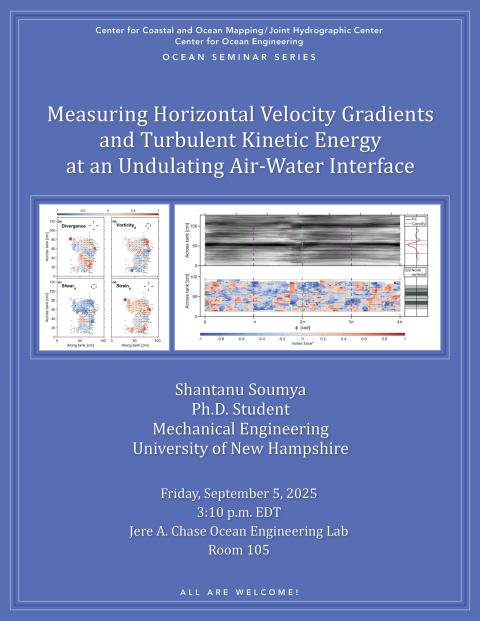Shantanu Soumya
Ph.D. Student
Mechanical Engineering
University of New Hampshire
Abstract
Velocity gradients are critical drivers of turbulent and scalar exchange processes within fluids. Calculating these gradients at a wavy air-water interface presents significant challenges, requiring simultaneous spatially distributed measurements of velocity fields across an undulating interface. In this study, we employ thermal marking velocimetry (TMV), an unobtrusive active velocimetry technique, to capture the surface velocity field over an unstructured grid. The surface velocity field is then used to compute the horizontal surface velocity gradient; together these enable calculation of the wave orbital velocity, surface strain, vertical vorticity, and turbulent kinetic energy (TKE). Furthermore, a structure function-based approach is employed to estimate the TKE dissipation rate at the wavy interface. Finally, we calculate the Eulerian vortex force field at the surface, providing a quantitative experimental connection between regions of surface convergence and divergence to spanwise variation in the vertical vorticity. These measurement capabilities are important for deepening our understanding of the physical processes associated with energy flux through the air-sea interface.
Bio
Shantanu Soumya is a fifth year Ph.D. student in the Department of Mechanical Engineering at UNH. He works under the supervision of Dr. Nathan Laxague on the mechanics of Air-Sea interaction. Prior to this, he earned his Master of science degree from Georgia Tech. in Civil and Environmental Engineering.

